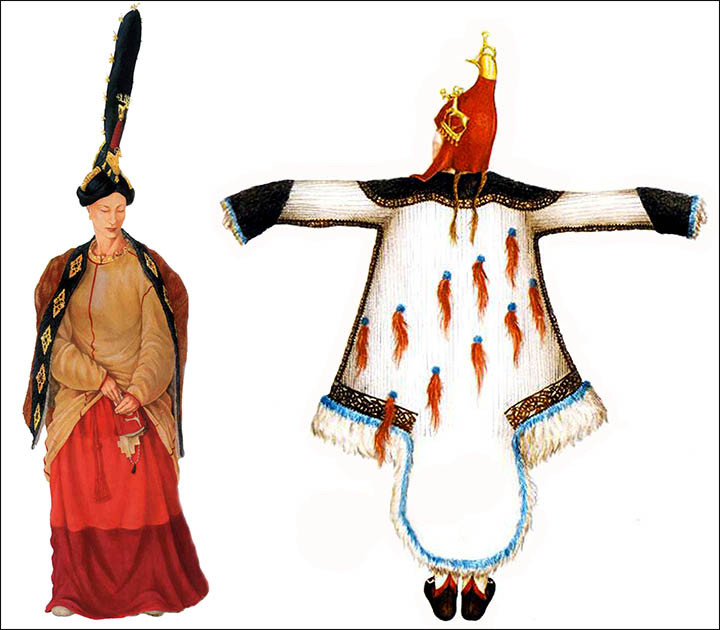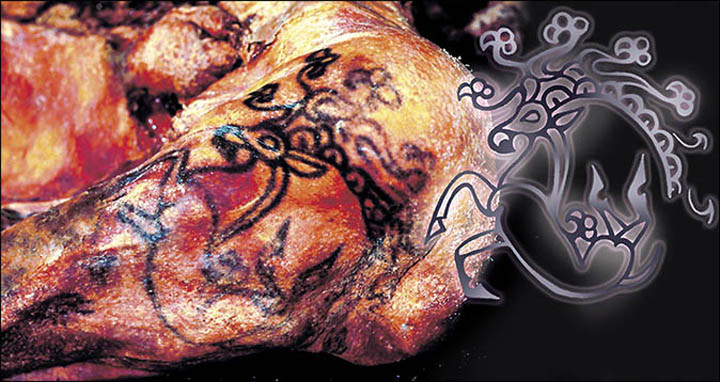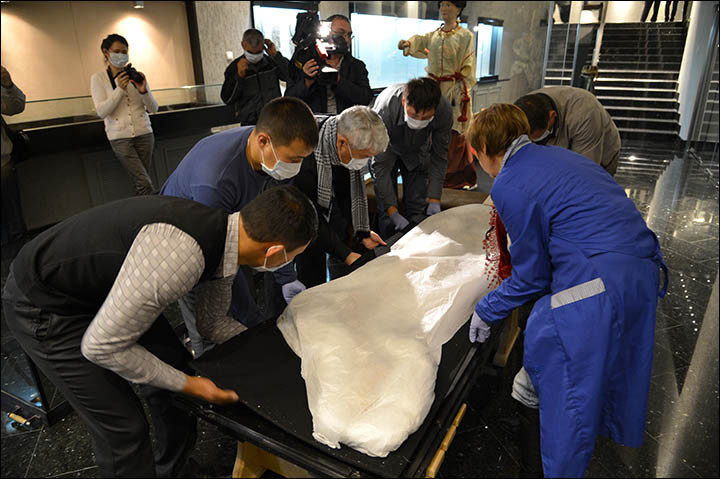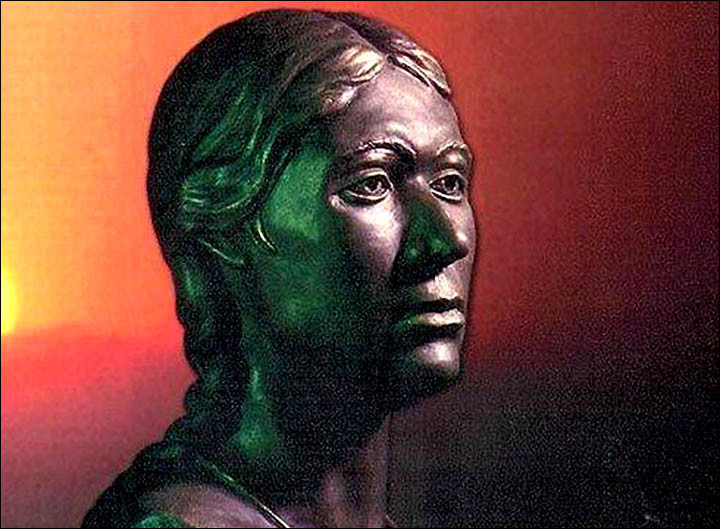Siberian Mummy Burial Row: Villagers Want Princess Ukok Reburied To Stop Natural Disasters

Villagers in Siberia are campaigning to have a 2,500-year-old mummy reburied in her final resting place in the Altai Republic, southern Siberia, in order to prevent natural disasters from occurring due to her spirit's displeasure, according to the Siberian Times.
In 1993, Russian archaeologists discovered the prehistoric mummy called Princess Ukok, also known as the "Siberian Ice Maiden", in the Ukok plateau, preserved in permafrost at an altitude of 2,500m in the Altai Mountains.
The Altai Mountains are a mountain range in East-Central Asia and a Unesco world heritage site where Russia, China, Mongolia and Kazakhstan meet, as well as several rivers. The site contains evidence of humans from almost one million years ago, as well as rare plant and animal species.


Princess Ukok died when she was 25 and was buried with beautiful, richly made clothing, jewellery and cosmetics, six bridled and saddled horses, a meal of sheep and horse meat, and according to some accounts, a small container of marijuana.
What is most astonishing is that the princess and a mummy of a warrior found in the same plateau both bear the most elaborate and best preserved tattoos that have ever been found.

Both mummies are believed to have been part of the Pazyryk nomadic tribe that was first mentioned by the Greek historian Herodotus in the 5<sup>th century BC. The belongings found buried with them and the tattoos have helped archaeologists recreate what the Pazyryk people would have looked like.
Anger at displaying naked mummy
For 19 years, the mummy of Princess Ukok was studied by Russian archaeologists at a scientific institute in Novosibirsk. But in 2012, she was moved to the National Museum of A.V. Anokhin in the Altai Republic.
Princess Ukok is now on display in a glass sarcophagus at the museum, draped in a thin white cloth, and visitors can pay an entrance fee of 250 rubles (£4.18, $6.93) to view the mummy, a fact that has angered the people of the Altai Republic.
"Who puts up the naked corpse of their mother for public display? She knocks into our heart, seeking compassion. She is cold from evil indifference," campaigners told the Siberian Times.
Village elders believe the mummy, whom they call "Oochy-Bala" was placed in the burial chamber to bar the entrance to the kingdom to the dead, and that removing her body has led to the worst flooding in Altai in 50 years, as well as a series of earthquakes.
Now Altai Republic's Council of Elders has voted overwhelmingly to have Princess Ukok reburied.
"Because the council of elders took the decision, the mummy of this respected woman will finally be buried," said Akai Kine, a zaisan (head of the kin) of the Teles ethnic group who participated in the vote.
"The next step will be the adoption of a local law, on the basis of which it will happen. Another important step will be the preparation of clothing, utensils and approval of the ritual burial."

Reburial could take quite a while
Although the Altai regional government is willing to compromise, the elders' wishes might not be enough to get past the Russian federal government, which will likely be on the side of the archaeologists and scientists who have studied the mummy for so long.

"It is correct the Council of Elders took such a decision, but can you for example bury some vase from Hermitage Museum? Of course not. The mummy, though it can sound quite rude, is still a museum exhibit, that is we cannot just bury, no one has done such things before," said Oksana Yeremeeva, head of information and public affairs for the Altai Republic.
"The decision of Council of Elders is very respectable but we cannot implement it immediately. We as officials should work out the way to implement it, think about the steps we need to take to make it possible."
Yeremeeva added that perhaps a compromise could be struck to rebury Princess Ukok at her own dedicated museum but it will probably take at least a couple of years to get approval for such a museum and then for it to be built.
© Copyright IBTimes 2025. All rights reserved.






















